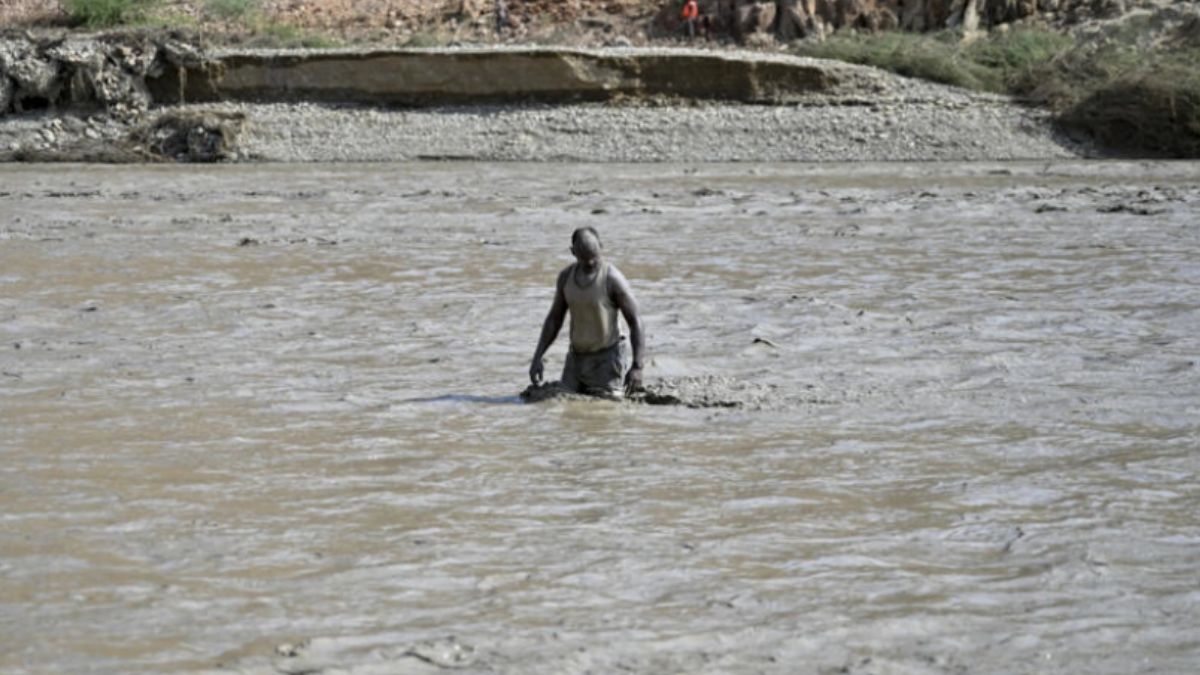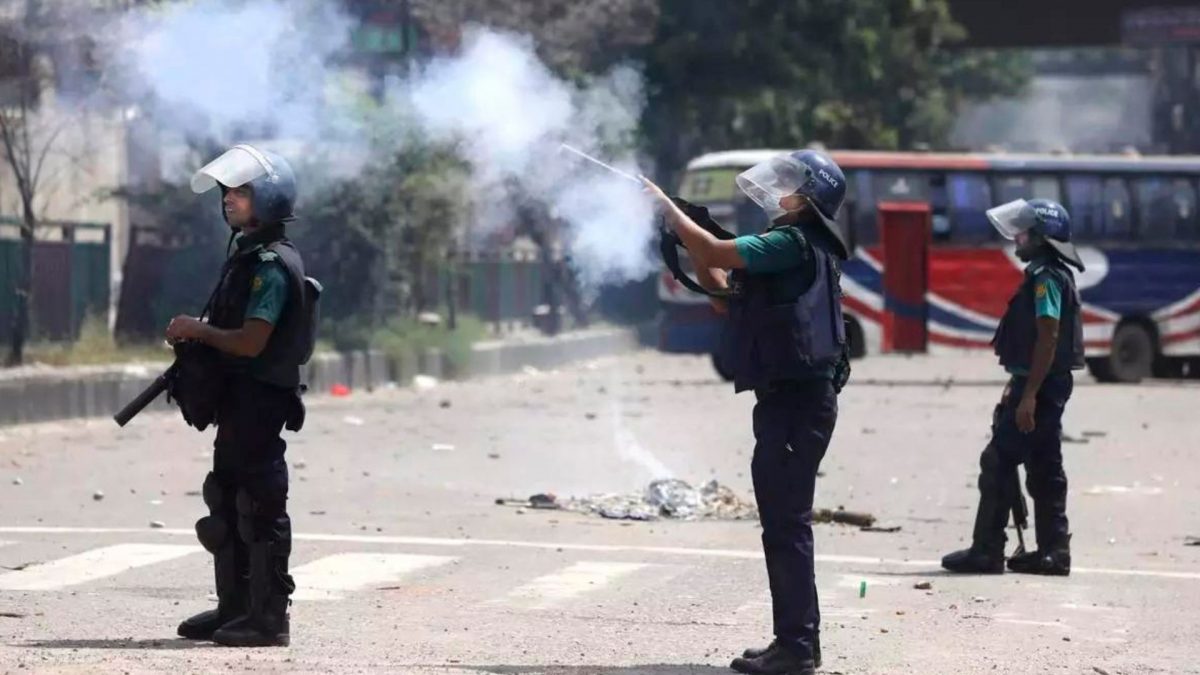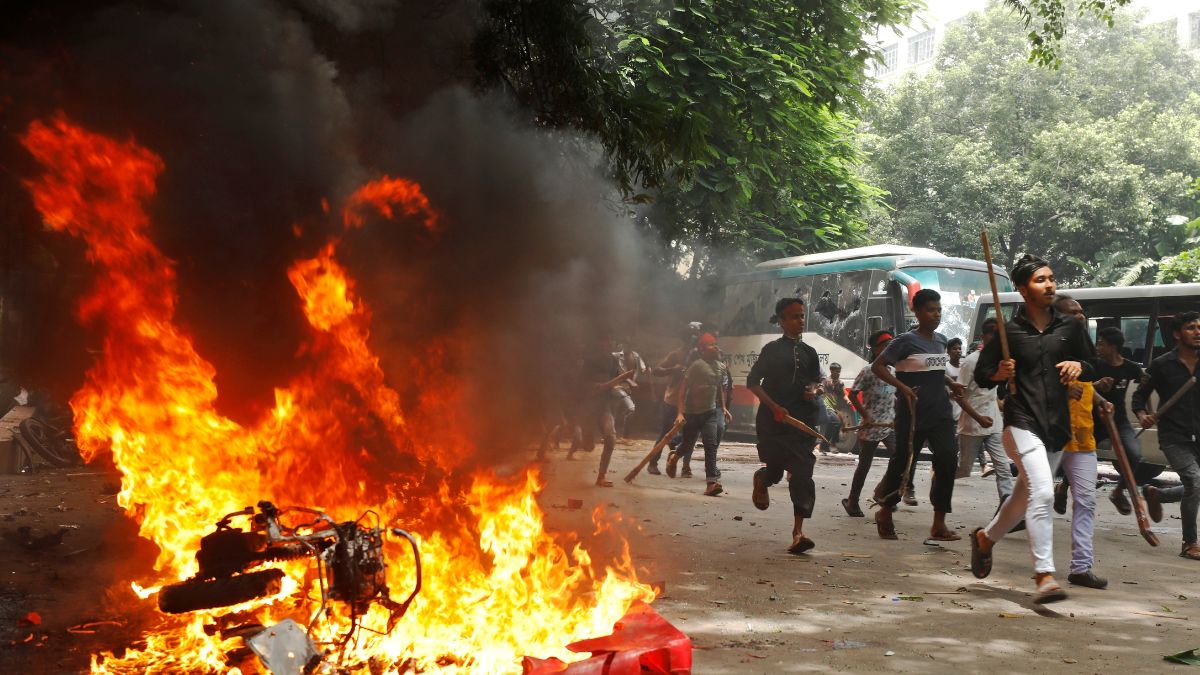Despite the Cambodian government’s denial of foreign military bases, satellite images of Ream Naval Base reveal a near-permanent presence of Chinese warships. The Chinese-funded expansion, including a new pier capable of docking large vessels, raises fears of a growing Chinese military footprint in Southeast Asia read more
)
This satellite photo taken by Planet Labs PBC shows two Chinese corvettes docked at the Ream Naval Base on the Gulf of Thailand on May 8, 2024. File Image/Planet Labs PBC via AP
The Ream Naval Base in Cambodia has recently drawn international scrutiny, particularly from the United States, which fears that the base may be transforming into a Chinese military outpost.
Satellite images taken throughout 2023 and 2024 revealed two Type A56 corvettes of the Chinese Navy docked at Cambodia’s Ream Naval Base, catching the eye of many in Washington.
These 1,500-ton warships are stationed alongside a Chinese-built pier that is long enough to accommodate even larger vessels. Additionally, onshore facilities presumed to be for Chinese naval use have been constructed.
The construction has fuelled suspicions that Ream might become a base for China’s growing naval force. China, which already has one military base abroad in Djibouti, built in 2016, is believed by US officials to be expanding its global reach.
What has Cambodia said?
Cambodia, however, has continuously denied the allegations. “The Ream Naval Base is not for the Chinese,” Cambodia’s Deputy Prime Minister Sun Chanthol stated in Washington earlier this month.
“The Chinese provided us with assistance to expand Ream for our national defence, not to be used by the Chinese or any military against another country.”
Despite these reassurances, US officials have expressed concerns. A US-based think tank, the Asia Maritime Transparency Initiative (AMTI), reported in May 2024 that two Chinese corvettes had maintained a nearly permanent presence at the base since December 2023.
Cambodian officials, including Defence Ministry spokesperson Chhum Socheat, have repeatedly denied that the base will become a permanent Chinese military facility. Cambodia’s constitution explicitly prohibits foreign military bases on its soil.
Why is the US irked by these developments?
Ream was once the beneficiary of US military aid, part of a broader partnership that saw regular joint naval exercises between the two countries. However, in 2017, Cambodia’s government banned the main opposition party, leading to strained US-Cambodia relations and a reduction in US aid.
In the years that followed, Cambodia switched its military exercises to the “Golden Dragon” drills with China and began accepting increased Chinese investment.
The Ream Naval Base saw rapid changes soon after. By 2020, two US-funded buildings at the base were demolished, and Chinese-funded expansion began.
The new pier at Ream is strikingly similar to China’s Djibouti pier and measures 363 meters — long enough to accommodate China’s largest aircraft carriers. While Cambodian officials insist the Chinese ships are only there for training purposes, US officials argue that this signals a growing Chinese military presence in the region.
In 2019, The Wall Street Journal reported on a leaked agreement between China and Cambodia to lease 77 hectares of the base for 30 years — a report that Cambodia quickly labelled as “fake news.”
Nevertheless, tensions persist. US Defence Secretary Lloyd Austin raised the issue during a meeting with Cambodian leadership in June 2023, underlining the importance of preventing any permanent foreign military presence. Washington has also continued to press Cambodia to uphold its constitutional commitments.
What does this imply for the region?
The prospect of a permanent Chinese military presence in Cambodia has raised alarms beyond US circles. Neighbours like Thailand and Vietnam are concerned about China’s intentions.
A base at Ream, situated at the mouth of the Gulf of Thailand, could be viewed as an attempt to encircle Vietnam’s long coastline, a sensitive area given China’s contested claims over the South China Sea. Vietnam and China have a history of clashes over maritime boundaries, and Vietnam remains cautious of Chinese intentions.
Similarly, Thai national security officials have privately expressed concerns about a Chinese naval base near Thailand’s key port in Sattahip. This location, just south of Ream, could block Thailand’s exit from the Gulf of Thailand.
However, both Thailand and Vietnam are unlikely to voice their concerns publicly, seeking to avoid any disruptions in their respective relationships with China.
China’s military reach, though currently limited compared to the US, is being closely watched. Cambodia’s proximity to the Straits of Malacca — a critical chokepoint through which 80 per cent of China’s trade passes — only heightens fears that China is strategically positioning itself to secure key maritime routes.
Why is Ream Naval Base important?
Ream Naval Base’s position offers strategic advantages, particularly in relation to the Malacca Straits, which lead from the South China Sea to the Indian Ocean.
With another base in Djibouti, China’s influence now spans both sides of the Indian Ocean, fueling concerns in India and among US strategists. According to military analysts, the Ream base could be used to track satellites, gather intelligence, or monitor naval movements in the region.
Indian strategists are especially wary, seeing China’s presence at Ream as a move to counterbalance India’s naval dominance. There are concerns that in the event of a conflict, the Chinese Navy could utilise Ream to impede Indian or US naval movements aimed at cutting off China’s trade routes through the Malacca Straits.
Additionally, China’s involvement in Myanmar’s Kyaukphyu Port and the development of the Gwadar Port in Pakistan point to a broader strategy of securing key positions along major maritime routes.
Is Beijing a threat?
Despite growing concerns, analysts believe China’s global military ambitions still have a long way to go before they rival those of the United States, which maintains around 750 foreign military bases compared to China’s single base in Djibouti.
However, the potential for a Chinese base in Cambodia highlights the ongoing shifts in global power dynamics.
As China continues to assert its influence through the Belt and Road Initiative and its military modernisation efforts, countries in Southeast Asia and beyond watch closely.
With inputs from agencies

 1 month ago
9
1 month ago
9
)
)
)
)
)
)
)
)
)
)
)
)
)
)
)
)
)
)
)
)
)
)
)
)
)
 English (US) ·
English (US) ·